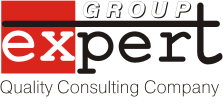| Section: |
7.4.2 d |
Section Title: Requirements for Technical Data |
| 9100 C Clause |
Purchasing information: Purchasing information shall describe the product to be purchased including, where appropriate
the identification and revision status of specifications, drawings, process requirements, inspection/verification instructions and other relevant technical data |
| Generic Expectation |
It is expected, as part of the purchasing information, that the organization (buyer) shall describe in the contractual documents details about the product including product name or number, description, configuration (applicable drawing and specification requirements and their revisions), processes, inspection/verification methods and acceptance criteria and other relevant technical data the buyer considers necessary as being required by the seller to properly plan the manufacturing and to manufacture the product to engineering data/requirements. |
| Product Type: |

COTS/Standards |

Raw Material |

Build-to-Print |

Supplier Design |
| Specific Expectation |
Organization (Buyer) |
Buyer should define and specify, in the contractual documents, the standard part name or part number and description. If the part number is made to a standard drawing different than the part number then the buyer should specify the standard drawing as well. |
Buyer should define and specify, in the contractual documents, the raw material type, applicable industry standard and/or customer specification as well as the manufacturer and/or special processors, including applicable revisions and incorporation points of changes. |
Contractual documents should define and specify the part name and part number including the latest revision of specifications, standards, processing requirements and engineering drawings/models as applicable, and applicable incorporation point. If the product is made to a 3-D model, the Buyer should define the requirements for software compatibility. If non-Engineering Part Numbers are used, the contractual documents need to identify the Engineering equivalent and describe the non-Engineering condition. Required inspection activities such as source inspection and any verification requirements should be defined, along with any specific testing and inspection required prior to shipment of product. |
Contractual documents should define and specify the part name, and part number including the latest revision of specifications or engineering drawings/models as applicable, and applicable incorporation point.
If the product is made to a purchase specification, a statement of work or other definition should be used to identify the configuration / standard that is ordered.
Required inspection activities such as source inspection and any verification requirements should be defined, along with any specific testing and inspection required prior to shipment of product. |
| Supplier (Seller) |
N/A |
Supplier should comply with the configuration requirements and incorporation point as defined in the contractual documentation.
Supplier should flow-down applicable configuration requirements to subtier suppliers as applicable. |
Supplier should comply with the configuration requirements and incorporation point as defined in the contractual documentation.
Supplier should submit any revisions of drawings, models, specifications, etc. to the Buyer for concurrance.
Supplier should flow-down applicable configuration requirements to subtier suppliers as applicable. |
| Documentation to demonstrate conformance to expectation (what the auditor would look for) |
Organization (Buyer) |
Contractual document detailing the definition of the product by part number and/or applicable standard, including revisions. |
Examples of contractual documents may include Purchase Orders, General Terms & Agreements, Special Business Provisions, Outside Processing Plans, Standard Quality Notes, Memorandum of Agreement / Understanding (MOA/MOU), Statement of Work (SOW), etc. |
Examples of contractual documents may include Purchase Orders, General Terms & Agreements, Special Business Provisions, Outside Processing Plans, Standard Quality Notes, Memorandum of Agreement / Understanding (MOA/MOU), Statement of Work (SOW), Source Control Drawings, etc. |
| Supplier (Seller) |
Contractual document detailing the definition of the product by part number and/or applicable standard / specifications including revisions. Records demonstrating compliance to contract requirements. |
Copies of drawings, specifications, models, etc. at the revision required by the contractual documents. Contractual document detailing the definition of the product by part number and/or applicable standard / specifications, including revisions. Records demonstrating compliance to contract requirements. Procedures for accessing required configuration of drawings, models, specifications, etc. |
Copies of Buyer approved Supplier Controlled Drawings, specifications, models, etc. at the revision required by the contractual documents. Contractual document detailing the definition of the product by part number and/or applicable standard / specifications, including revisions. Records demonstrating compliance to contract requirements. |
| Examples (Best Practices) |
Organization (Buyer) |
|
|
|
|
| Supplier (Seller) |
|
|
|
|
